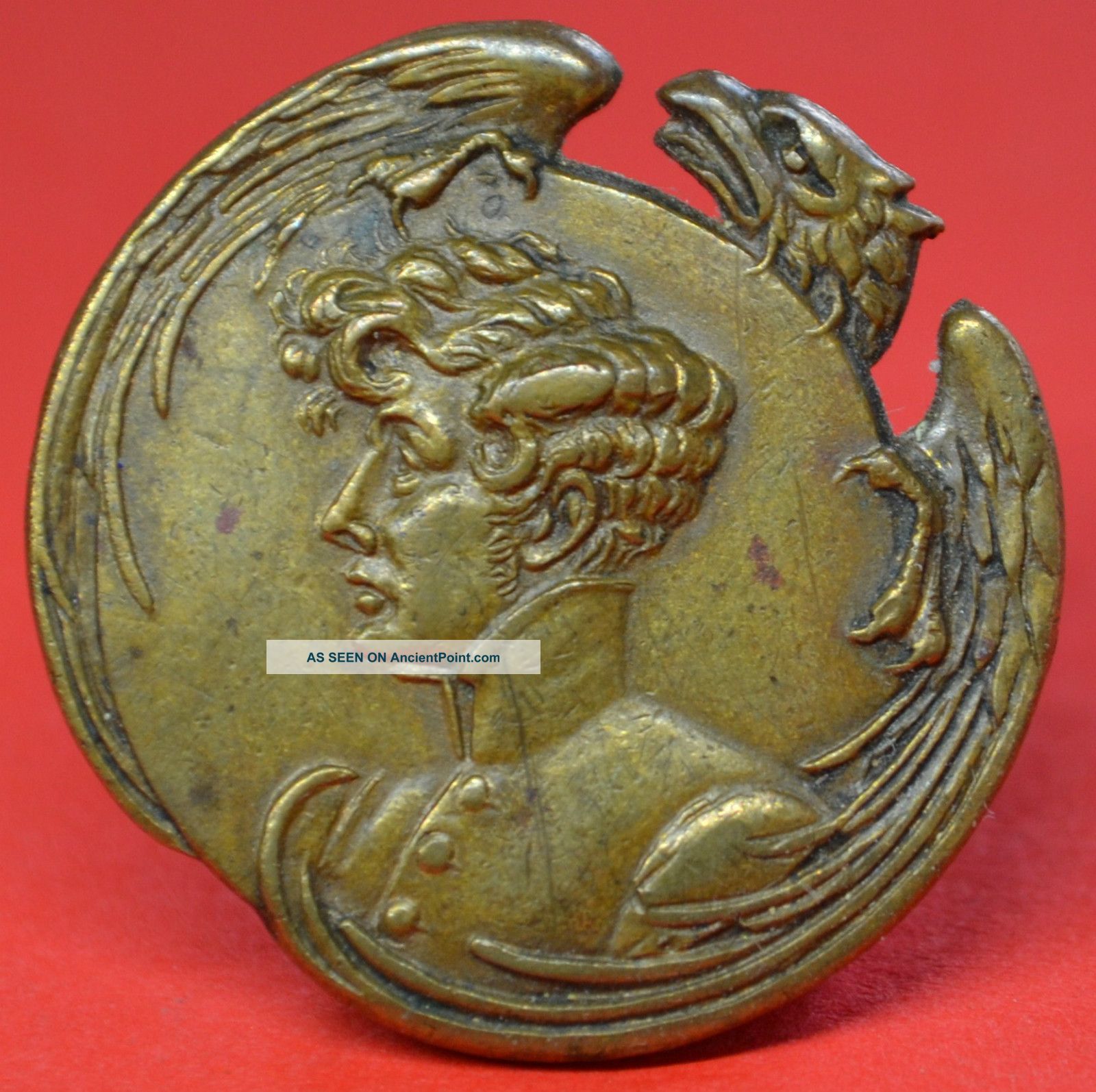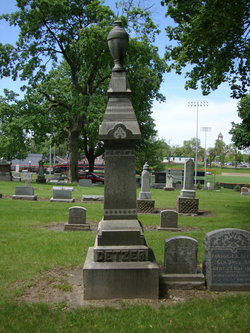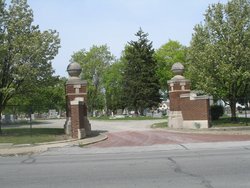Copy of a letter from Mary Ann (Gardner) Brannan to her sister. No date legible.

My father , Moses Gardner, was born in Lycoming County, Pennsylvania, February 14, 1811. He being the next oldest of the family of nine children. Joshua Gardner, his father, not having a farm of his own, lived on a hire one, where they must farm hill side so steep they must put in the rye with a hoe. At reaping time it was harvested with a sickle and threshed with a flail. The most of winter being spent cleaning the grain through a windmill to free it of chaff; and teaming over the mountains; leaving very little time to attend school. Father having only three months of school in his life. He was very apt in many things, one being blinding grain, having never met and equal in that. He was a remarkable man in that he had double teeth all around his mouth, above and below, with very strong jaws, could bite a pin into, also a small nail and crack a walnut as well. In the early 1840's he decided to see the west. Came to Defiance County, Ohio spending a winter with a Mr. Biglow doing chopping, also looking over the the land there. Buying his first land of Mr. Biglow. The old home farm, then going back to Pennsylvania. Was married to Jane Taylor, also born in Lycoming County in 1823, March 1st. They with a party of 23 people, Joshua Gardner's family, Mr. Blairs and some others coming all the way in old fashioned moving wagons, the distance being six hundred miles, being three weeks on the way, bringing a few things including cows, that they milked and put the milk in the churn and by night they had butter of there own.
The Gardner family lived together in a double cabin on the Clem Gardner farm until father cut away the trees to build his log house. It was a nice large house, having two rooms, two doors and three windows, at first just puncheons shelves for the dishes, which were very pretty ones, and white ware of a lovely shape. The sugars and creams were square. There was a great fireplace to burn huge logs, which burned night and day, always a great bed of coals. A crane swung out from the chimney, for hanging kettles on. A bake kettle with long legs and very heavy, and to bake they put heaps of live coals under and on top. We had real boards for the floor. I can remember how white it was. Also had steps to go upstairs instead of a ladder. The house had a clap-board roof, weighted down with poles, all homemade. I was not quite 8 years old when we left the log house and moved into the new one, in 1850, Maggie being born the day we moved in. It was up so high and the dishes made so much noise. I wanted to go back to the old one. The new house was built by the Brittons. Father and sons, doors, sash and all made by hand, was quite a long work compared to the building of a house now.
The Pennsylvania relatives were afraid we would starve away out here, and Uncle Robert and Aunt Mary dried and prepared all kinds of fruit to bring out. Not being used to travel, they failed to check their baggage at Williamsport. So it did not arrive. How uncle laughed. When he sat at the table would say, this don't look like starving. As it was, they were without a change of clothing while on their visit. Mother said that from the very first they always found so plenty of everything, blackberries, raspberries, whortle berries, cranberries, and soon they had more peaches than they could use or give away. Anywhere on the place, they could have a sugar bush as they would soon be cut down, they were cut with an ax to put in the spiler (?). Then the sap would run in a stream, sometimes in two places on the same tree. We always had all the sugar and syrup we could use making preserves, peach butter, as we not known of canning fruits at that time. Mother had lived with Aunt Mary Ann in a hotel learning how to make such nice things to eat, we always had as good as she knew how to make. It must have been very gratifying to them to change from such hills to a level rich farm, where things grew so bountifully, and wild game was so plentiful. It was not an easy task to travel those times as the roads were made of logs in many places. They called them Corduroy roads. Some places just a path chopped out, winding around the wet spots, where they would get mired and must have help to get out as movers did in that day. Father never turned people away that wanted to stay over night. The kitchen often being filled with their beds. All they wanted was a fire to cook, and keep them warm. Possibly some butter or cream. Then they would pack up and go on a few more miles that day.
Father's farm was so heavily timbered it was a great task to clear it ready to farm. I well remember the great windrow that came right up to the house. And what a fire it made when it burned. All they got out of it all was the ashes which was sold to the Wms, Center Ashery. They used ox teams to plow and do the logging with. Being some time before they had horses. I well remember the first team. A dapple grey, and a bay named Flagg and Charlie. They were no means te last, for we had a plenty afterwards. Father was a great hunter, killing deer in the clearing at first, wild turkeys were plentiful as were the grey and black squirrels, of which we had a plenty. We never out of dried venison in season. If we had all other kinds of meat, father would get hungry for the wild meat, go out and kill it. Perhaps roast on the coals, his favorite way. When we old enough to go to school, we went at first just west a quarter mile, for a short time. Then we went over to the Bellefountain Road, nearly two miles. But father blazed a way through the woods and put a hand rail by a big log so we might cross the stream, then it was not so cold or so far. We would go in the day time and often at night to spelling schools we used to have. When we were small we had a spelling school at the little log school house. A lady teacher we had did some extra work with her pupils reserving the right to skip about in the book. When the evening came the house was brim full of all the best spellers, from north and south. The teacher always giving her scholars easy words. Finally after Sally had spelled her word the teacher pronounced aj. They spelled adge and every other way. When it came to Sallie she said aj and stood alone.
Father had the first buggy in the neighborhood and it was in great demand among the young men when a party was in view. Coming to a engage it sometime before hand to make sure of it. They very often came to our house to have a dance bring their music. Father and mother doing all they could to give them a good time, Father being a dancing master. He must always do something do some fancy steps for them, such as dancing Jim Crow, and C as they said then. Their latch string was always out. For sleighing parties would come evening to visit and tell yarns and sing songs, of which father knew a bunch, while mother got up a nice supper, baking cake, biscuits, and C. At one time the seasons were so wet the wheat all grew so much in the shock it would not make bread. So the corn was used most of the time. Curtis was about three years old and could not like it, biscuits being all the kind of the wheat bread he knew of. Father got a bit of wheat . Sent the man to mill it. Curtis watching all day for him, finally catching sight of him coming, ran as fast as his little legs could care him, saying "Oswald is coming with our biscuits." That being the only time we did not have wheat for bread and to spare.
During the civil war we had bountiful harvests. Men were so scarce that Sally and I were father's Boys, helping in with the hay, grain and corn, getting them all taken care of in season. Besides we helped to milk, churn and spin. Mother making blankets, cover lids, flannels for dresses, and fur filled cloth for men's wear. Afterwards making it all up by hand, Mother spinning her own thread from the flax, and dying it when needed,to make it all up with. During the war cotton goods were higher priced than we have known, calico 50 cts, muslin as high as 90 cts, so that our woolen clothes were desirable indeed.
Although there seemed always so much to do, with them (Father and Mother) it did not seen such a burden, as each though the other could do their part so well.
Should father be away and come home and not see her, the first one he met he would ask "Where's your mother?" He said she was selected because she never kept him waiting when he would take her places. Then was always her work was done on time. They were good workers, ever ready for the work in season. Never seeming a hard task to get their work done, always welcoming all comers, so that they always wished to come again.Not neglecting us at any time. To my mind few families of children were raised so carefree as our own and so happy.
Mother always wished to keep her health and to care for her family until the time they could care for themselves. Then she had no wish to live out her usefulness and be a burden to anyone. Her own mother living to be over 97 years of age and said people would think her lazy if she would have a rocking chair, and when her oldest son was a week old, a bear came down out of the mountains was carrying off their only pig. she went out and made him drop the pig and run away.
So may we all be as brave and strong as our ancestors is my wish, as it surely is a great heritage.
Lovingly your sister,
Mary A. Brannan
And where we love is home.
Home that our feet may leave but not
our hearts.
Foot Note
Moses Gardner came to Williams County, in 1842 they went to house keeping on the north side of the present Defiance-Williams County line, just two miles west of Williams Center.


 its of prominent citizens of Defiance years ago and illuminating glimpses of how they lived were revealed in a the address by Rev. Fred Detzer of Niles Center, Ill., at St. John's Lutheran church. his historical sketch of Defiance was taken from the diary of Rev. Detzer's father who established the first Lutheran church in Defiance and founded a score of churches in the Northwest Territory.
its of prominent citizens of Defiance years ago and illuminating glimpses of how they lived were revealed in a the address by Rev. Fred Detzer of Niles Center, Ill., at St. John's Lutheran church. his historical sketch of Defiance was taken from the diary of Rev. Detzer's father who established the first Lutheran church in Defiance and founded a score of churches in the Northwest Territory.

 Diary Ends in 1856
Diary Ends in 1856 

